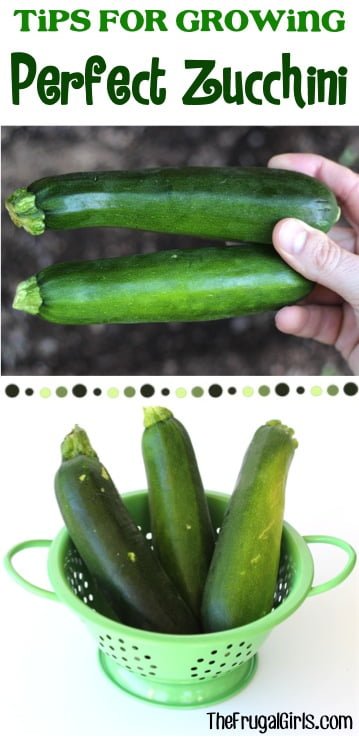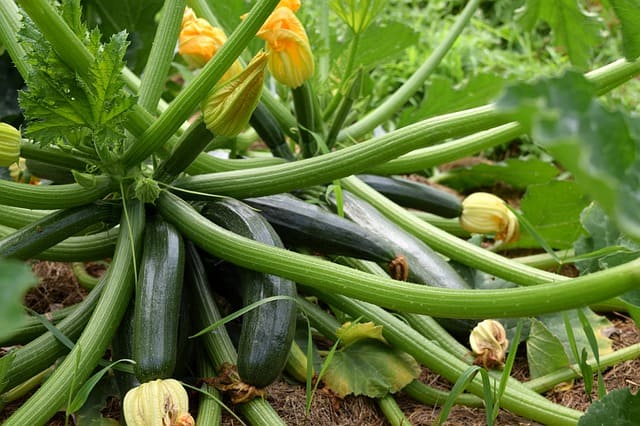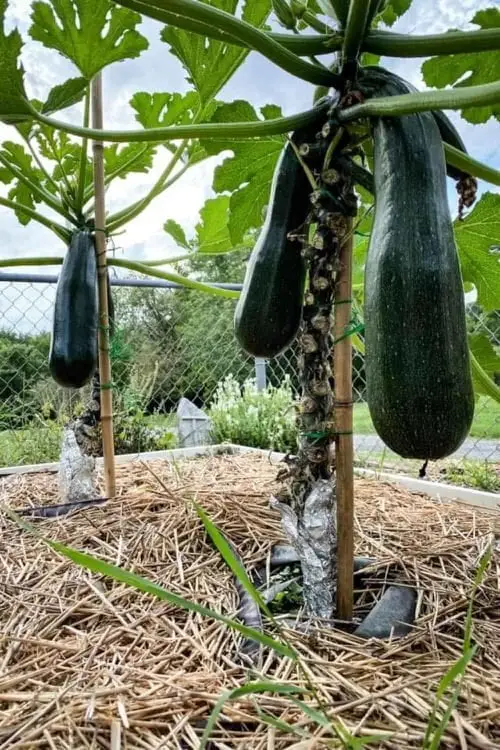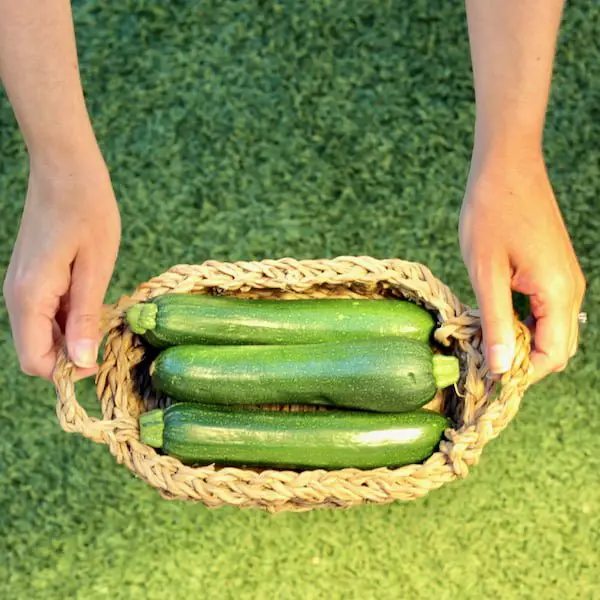Are you a lover of fresh, homegrown vegetables but don’t have access to a large backyard or outdoor space? Look no further than indoor zucchini growing! Discover the secrets to successfully growing zucchini right in the comfort of your own home. With a few tips and tricks up your sleeve, you’ll be enjoying delicious, homegrown zucchinis all year round. Say goodbye to limited growing seasons and hello to a bountiful harvest, as we take you through the ins and outs of indoor zucchini cultivation.

Choosing the Right Zucchini Variety
When it comes to growing zucchini indoors, it’s important to choose the right variety that will thrive in your space. Consider the limitations of your indoor garden and select a zucchini variety that is well-suited for this environment.
Consider Your Space
Before selecting a zucchini variety, think about the available space you have for growing indoors. If you have a small indoor garden or limited space, it’s best to choose a compact zucchini variety that won’t overwhelm your space. On the other hand, if you have a larger indoor garden or more room to spare, you can opt for a larger zucchini variety.
Choose a Compact Variety
For indoor gardening, compact zucchini varieties are ideal as they have smaller plants that take up less space. These varieties produce smaller fruits that are perfect for indoor gardening. Look for varieties such as ‘Patio Star’ or ‘Bush Baby’ that are specifically bred for compact growth. These varieties will not only fit nicely in your indoor garden but also provide you with a bountiful harvest.
Favored Indoor Zucchini Varieties
There are several zucchini varieties that perform exceptionally well when grown indoors. Some popular choices among indoor gardeners include ‘Dunja,’ ‘Raven,’ ‘Astia,’ and ‘Black Beauty.’ These varieties have been specifically developed to thrive in containers and indoor environments. Do some research and find the variety that suits your preferences and growing conditions.
Preparing the Indoor Environment
Creating the right environment for your indoor zucchini plants is crucial for their overall health and productivity. Here are a few key factors you should consider when preparing the indoor environment for your zucchini plants.
Selecting an Adequate Container
Choosing the right container is essential for successfully growing zucchini indoors. Opt for a large, deep container that can accommodate the root system of the zucchini plant. Ensure that the container has sufficient drainage holes to prevent waterlogging.
Providing Proper Drainage
Good drainage is crucial for zucchini plants. As excess water can cause root rot and other fungal diseases, it’s important to provide proper drainage in the container. Place a layer of small rocks or gravel at the bottom of the container before adding the potting mix. This will help prevent water accumulation and ensure that the roots stay healthy.
Optimizing Temperature and Humidity
Zucchini plants thrive in temperatures between 70°F to 85°F (21°C to 29°C). It’s essential to keep your indoor environment within this temperature range for optimal growth. Additionally, zucchini plants require moderate humidity levels of around 50% to 70%. To maintain the desired temperature and humidity, consider using a thermometer and humidifier in your indoor garden.
Ensuring Sufficient Lighting
Lighting is one of the most crucial factors for successful indoor zucchini growth. Zucchini plants require at least 6 to 8 hours of direct sunlight or artificial grow lights per day. Place your indoor zucchini garden near a south-facing window or use full-spectrum LED grow lights to ensure your plants receive adequate light. Monitor the lighting conditions regularly to ensure your zucchini plants are receiving the right amount of light.

Sowing Zucchini Seeds
Once you have prepared the indoor environment, it’s time to sow your zucchini seeds. Proper timing and techniques are essential for successful germination and seedling growth.
Determining the Optimal Time
Zucchini plants are warm-season crops and need warm soil temperatures for successful germination. Wait until the soil temperatures consistently reach around 60°F to 70°F (15°C to 21°C) before sowing the zucchini seeds. This typically occurs in late spring or early summer for most regions, but can vary depending on your specific location.
Germination Process
To germinate zucchini seeds, fill your container with moistened potting mix and create small planting holes about an inch deep. Place one or two zucchini seeds in each hole and cover them lightly with the potting mix. Mist the soil gently to keep it consistently moist but avoid waterlogging. Zucchini seeds usually germinate within 5 to 10 days.
Transplanting Seedlings
Once the zucchini seedlings have grown their first set of true leaves, they are ready to be transplanted into their permanent containers. Carefully remove the seedlings from the original container, taking care not to damage the delicate roots. Place them in their new containers, ensuring that the soil level remains the same as it was in the original container. Gently firm the soil around the seedlings to provide support.
Nurturing Zucchini Plants
To ensure healthy growth and a bountiful harvest, it’s important to provide proper care and maintenance to your indoor zucchini plants.
Watering Techniques
Consistent and appropriate watering is essential for the health of zucchini plants. Avoid overwatering, as it can lead to root rot, but make sure the soil remains evenly moist. It’s best to water deeply and then allow the soil to dry out partially before watering again. Check the moisture level by inserting your finger about an inch into the soil. If it feels dry, it’s time to water your zucchini plants.
Fertilizing Zucchini
Since zucchini plants are heavy feeders, they require regular fertilization to ensure optimal growth and fruit production. Use a balanced organic fertilizer or a slow-release granular fertilizer, following the package instructions for dosage and frequency. Apply the fertilizer around the base of the plants, taking care not to touch the leaves to avoid burning.
Pruning for Optimal Growth
Pruning zucchini plants is not necessary for indoor gardening but can help promote better airflow, reduce the risk of disease, and improve overall plant health. Remove any dead or yellowing leaves regularly to prevent the spread of diseases. If your zucchini plants become excessively bushy, you can also selectively prune some branches to allow more light and air circulation.

Pest and Disease Management
Indoor zucchini plants are not immune to pests and diseases. It’s important to be proactive in preventing and managing these issues to ensure the health and productivity of your plants.
Common Pests that Affect Indoor Zucchini
Some common pests that can affect indoor zucchini plants include aphids, whiteflies, spider mites, and fungus gnats. Monitor your plants regularly for any signs of pest infestation such as yellowing leaves, leaf damage, or sticky residue on the leaves. Early detection is key to preventing the pests from spreading.
Prevention and Control Measures
To prevent pests, practice good sanitation by keeping your indoor garden clean and free from debris. Consider using organic pest control methods such as insecticidal soap, neem oil, or introducing beneficial insects like ladybugs or lacewings. Additionally, sticky traps can be effective in catching and monitoring flying pests. If an infestation persists, consider using natural or organic-approved pesticides as a last resort.
Pollination of Indoor Zucchini Plants
Since indoor zucchini plants lack natural pollinators, it’s necessary to assist in the pollination process to ensure fruit set.
Hand Pollination
Hand pollination is a simple and effective method to pollinate indoor zucchini plants. Gently transfer pollen from the male flower to the female flower using a small paintbrush or cotton swab. Identify male flowers by their long slender stem and no visible swelling at the base. Female flowers have a swelling at the base, which will become the fruit after successful pollination.
Using Electric Toothbrushes for Pollination
For larger indoor gardens, where hand pollination may be time-consuming, using an electric toothbrush can be a helpful tool. Gently vibrate the toothbrush against the male flower to release the pollen, then touch the vibrating brush to the center of the female flower. This mimics the action of pollinators and facilitates the transfer of pollen for successful pollination.

Harvesting and Storing Zucchini
Knowing when and how to harvest zucchini is crucial for enjoying the best flavors and textures. Here are some tips to guide you through the harvest and storage process.
Determining the Right Harvest Time
Zucchini should be harvested when they are young and tender for the best flavor. Most zucchini varieties are ready to be harvested when they reach about 6 to 8 inches in length. Avoid waiting too long, as overripe zucchini can become tough and less flavorful. Regularly check your plants and harvest when the zucchini reaches the desired size.
Harvesting Techniques
To harvest zucchini, hold the fruit at its base and carefully twist or cut it from the plant using a sharp knife or garden shears. Take care not to damage the plant while harvesting. If you accidentally harvest zucchinis that are larger than desired, they can still be used for cooking, but they may have more seeds and a slightly tougher texture.
Storing Zucchini
Freshly harvested zucchini can be stored in the refrigerator for up to one week. Place them in a perforated plastic bag to maintain humidity levels while allowing excess moisture to escape. Alternatively, you can blanch and freeze sliced zucchini for longer-term storage. Simply blanch the slices in boiling water for a couple of minutes, cool them in ice water, pat dry, and store in airtight freezer bags or containers.
Common Issues and Troubleshooting
While indoor zucchini gardening can be rewarding, it’s not without its challenges. Here are some common issues you may encounter and troubleshooting tips to help you overcome them.
Yellowing Leaves
Yellowing leaves in zucchini plants can be a sign of various issues, including nutrient deficiencies, overwatering, or pest infestation. Assess the watering and fertilization practices, adjust as needed, and inspect the leaves for signs of pests. Improve ventilation in the indoor garden to prevent excessive humidity, which can also cause leaf yellowing.
Blossom End Rot
Blossom end rot is a common issue in zucchini plants characterized by a dark, sunken spot at the blossom end of the fruit. It is often caused by calcium deficiency or irregular watering practices. To prevent blossom end rot, maintain consistent soil moisture and ensure that your zucchini plants receive sufficient calcium. Adding crushed eggshells or a calcium-rich fertilizer can help alleviate this issue.
Wilting Plants
Wilting in zucchini plants can result from various factors, including over or underwatering, lack of nutrients, or disease. Assess the moisture levels in the soil and adjust watering accordingly. Check for signs of pests or diseases, such as root rot or fungal infections. Adjust the indoor environment to provide optimal temperature, humidity, and lighting conditions for your zucchini plants.

Expanding Your Indoor Zucchini Garden
Once you’ve mastered the art of growing zucchini indoors, you may consider expanding your garden and trying out new techniques. Here are some ideas to help you take your indoor zucchini gardening to the next level.
Propagating Zucchini Plants
Expand your garden by propagating zucchini plants from cuttings. Select a healthy and vigorous plant, take a cutting from the stem, remove the lower leaves, and place it in a glass of water. After a few weeks, the cutting will develop roots. Transplant it into a container filled with potting mix, and soon you’ll have a new zucchini plant ready to grow and produce.
Creating a Vertical Garden
If you have limited space but still want to grow multiple zucchini plants, consider creating a vertical garden. Install trellises or sturdy vertical supports in your containers and train the zucchini plants to grow vertically. This not only maximizes your space but also improves airflow and makes harvesting easier as the fruits will hang downwards.
Growing Companion Plants
Enhance the health and productivity of your zucchini plants by growing companion plants alongside them. Plants like basil, marigold, and nasturtiums can help repel pests and attract pollinators. Additionally, other vegetables such as lettuce or radishes can be grown alongside zucchini, making efficient use of your indoor garden space.
Conclusion
Growing zucchini indoors can be a fun and rewarding experience. By selecting the right zucchini variety, creating an ideal indoor environment, following proper sowing and nurturing techniques, managing pests and diseases, and understanding harvest and storage methods, you can successfully grow zucchini plants even in limited indoor spaces. With a little patience, care, and creativity, you’ll soon be enjoying the delicious taste of fresh, home-grown zucchini right from your indoor garden. Happy gardening!



